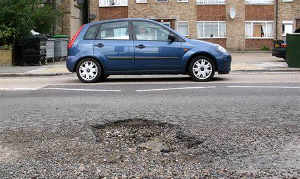Why condo corporations need an extra ‘financial cushion’

Canada’s national actuarial organization is recommending legislation that would require condo corporations to hold in their reserve funds a “financial cushion” above what’s required by a reserve fund study.
“That cushion protects corporations from adverse deviations from increased expenditures (among other things), as this component of our stochastic model demonstrated a high degree of volatility,” the Canadian Institute of Actuaries (CIA) said in a new research paper. “It should be high enough to cover emergency repairs and avoid a special assessment, but not so high that condo owners over-contribute for that financial protection.
“Since a lot of condo corporations will be required to increase their reserve fund contributions, and the size of that financial cushion depends on many other factors, we suggest additional research to explore the calculation of an appropriate financial cushion for a reserve fund.”
CIA created a stochastic model using actuarial techniques to assess the viability of reserve funds. It applied the model to two case studies of existing condo buildings, examining the evolution of their reserve funds over time.
The paper, Longevity of Infrastructure – Reserving and Risk Management in Condominium Maintenance in Canada, outlines several recommendations related to the minimum annual contribution and reserve fund balance and the financial cushion, among other items. It also highlighted the need for a broader education system to keep boards and condo owners up to date on requirements related to insurance, legislation, finance and other relevant issues.
iStock.com/van-balvan
For the reserve fund itself, legislation should “review the minimum annual contribution and impose a clear threshold of what should be the minimum amount contributed annually to the reserve fund,” CIA said in the report. “In the absence of an up-to-date (not older than 3 years) independent reserve fund study, the minimum annual reserve fund contribution should be 1% of the full reconstruction cost of the condo building.
“Also, the reserve fund balance should never be, at any time, below the amount of deductible for property damage on the condo corporation’s insurance policy (possibly several multiples thereof).”
Insurance claims are one factor affecting the reserve fund amount.
Canada’s condo insurance market saw skyrocketing premiums in recent years, with British Columbia and Alberta particularly hard-hit. In 2020, condo insurance premiums in B.C. rose on average 40% from the prior year, with anecdotal reports of much larger increases. While the condo insurance market appears to be stabilizing, challenges remain.
CIA’s report notes that in cases where a building’s common elements suffer damages covered by the building’s policy, it is sometimes more efficient to have it fully repaired under the insurance policy by using the reserve fund to pay for the deductible. “Some condo buildings have so many recurring claims (and some that are almost predictable) that they simply budget for the amount of their deductible in their reserve fund study instead of fully funding the cost of the common elements covered under the insurance policy, since they assume it will be claimed using their insurance.”
As for the reserve fund study, it should be prepared by a professional using best practices. This includes:
Selecting an appropriate provider by requesting quotations from different firms specializing in reserve fund studies (and one that will understand the building’s common elements in depth, and its peculiarities)
Requesting/encouraging on-site visits form providers that will allow the reserve fund study expert to assess accurately all common elements (quantity, quality, observed condition, etc.)
Providing necessary documentation and historical maintenance bills to help the expert in establishing the useful life and timely replacement of all common elements and their replacement cost.
Feature image by iStock.com/todamo




